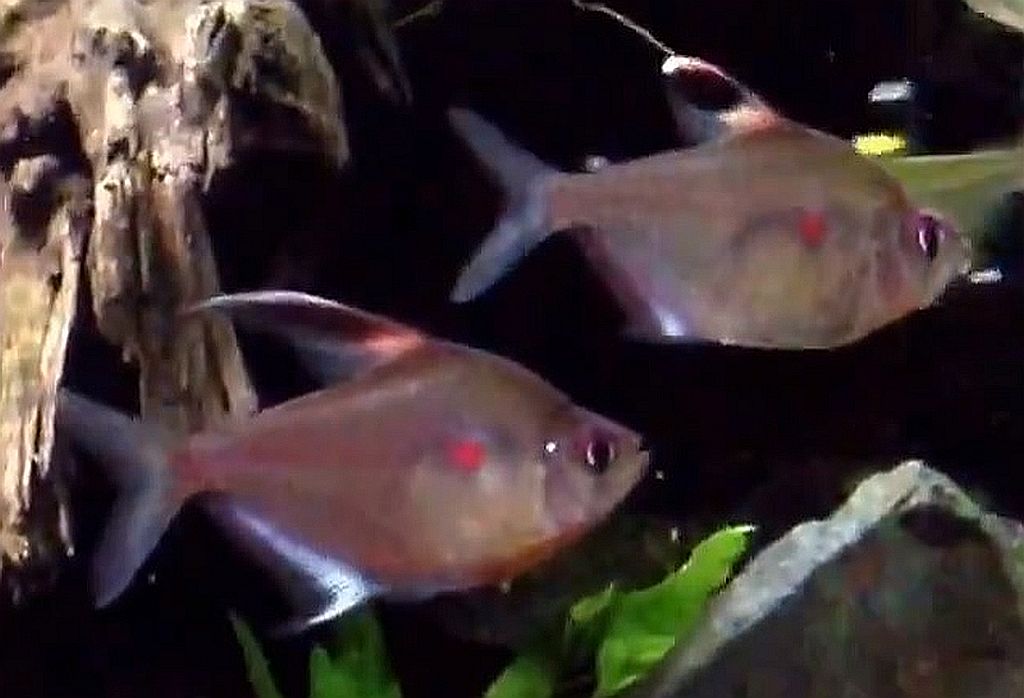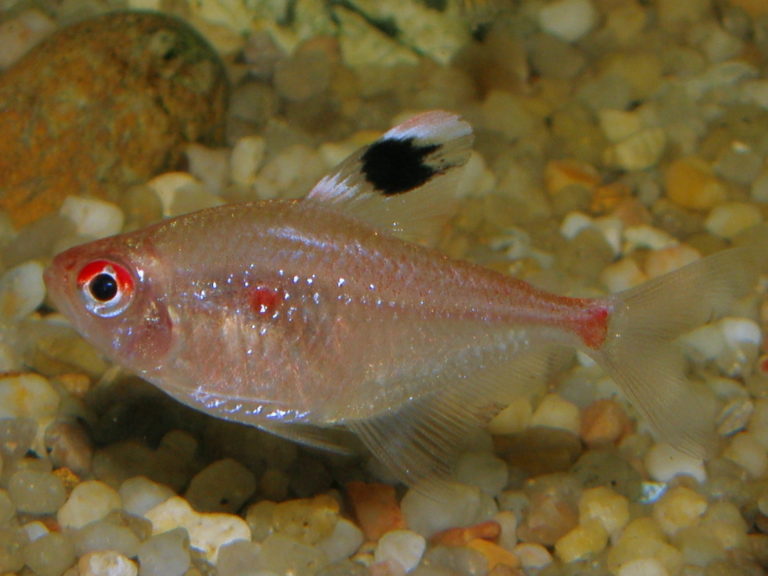

This species is generally peaceful making it an ideal resident of the well-researched community aquarium, although adult males are territorial to an extent, and this behaviour may sometimes extend to similarly-shaped species. It is perhaps best-maintained alongside similarly-sized characids, gasteropelecids, lebiasinids, smaller callichthyid or loricariid catfishes and non-predatory, medium-sized cichlids. To find other high quality, highly recommended foods click here. Like many fishes that naturally inhabit pristine environments it is intolerant to accumulation of organic pollutants and requires spotless water, meaning weekly water changes should be considered routine and it should never be introduced to a biologically immature aquarium. These can provide a valuable secondary food source for fry, whilst the tannins and other chemicals released by the decaying leaves are considered beneficial. The addition of dried leaf litter would further emphasise the natural feel and with it the growth of beneficial microbe colonies as decomposition occurs. A natural-looking arrangement might consist of a soft, sandy substrate with wood roots and branches placed such a way that plenty of shady spots are formed. MaintenanceĬhoice of décor is not especially critical, although this species tends to show better colouration when maintained in a well-furnished aquarium with live plants. Other aquarium filters which have been recommended highly by customers in your area can be found here. Maximum Standard LengthĪn aquarium with base dimensions of 75 ∗ 30 cm or equivalent should be the smallest considered. bellottii, Hemigrammus vorderwinkleri, Parapristella georgiae, Moenkhausia copei, Paracheirodon axelrodi, Copella nattereri, Nannostomus marginatus, Nannostomus trifasciatus, Ammocryptocharax elegans, Fluviphylax pygmaeus, Heros sp. Sympatric species at one locality in the rio Ereré basin included Hemigrammus ex gr. The water has a negligible dissolved mineral content, is poorly buffered and stained brown due to the gradual release of tannins and organic acids from decaying plant material.

Substrates are typically composed of white sand with patches of leaf litter common and the fish display a preference for shallow (30-90 cm deep) zones. pyrrhonotus has been observed to swim in small groups among submerged woody structures such as roots, fallen branches, overhanging riparian vegetation or aquatic plants.

The rio Ereré is a small river measuring just 7-12 metres in width and H. pyrrhonotus and its relatives in the Amazon. See ‘Notes’ for further information concerning the distribution of H. The point where the rio Branco enters the Negro main channel thus appears to be the southern boundary of its range, with the rio Padauari representing its northern limit (Teixera, 2010).
BLEEDING HEART TETRA PLUS
Type locality is ‘Rio Ereré, tributary to Rio Negro, Brazil’, and local fishermen apparently consider it restricted to the Ereré plus the rios Demeni and Aracá, all minor tributaries close to the town of Barcelos in the middle Negro.
BLEEDING HEART TETRA FULL
Order: Characiformes Family: Characidae DistributionĮndemic to the rio Negro system in Amazonas state, Brazil, although the full extent of its range is unclear. Pyrrhonotus: from the Ancient Greek πυρρός (pyrrho), meaning ‘tawny, red’, and ‘, and νότος (notos), which is normally said to mean ‘back’ but also appears to signify ‘south’. Hyphessobrycon: from the Ancient Greek υπελάσσων (hyphesson), meaning ‘of lesser stature’, and used as a prefix in this case, plus the generic name Brycon.

Females are usually more full bodied and males have a larger dorsal fin.Hyphessobrycon pyrrhonotus BURGESS, 1993 Flame-back Bleeding Heart Tetra Etymology The Bleeding Heart Tetra’s usual life span is between 3-5 years and it reaches up to 3 inches in length. Its original habitat is the Amazon River Basin and other river basins in South America and Columbia, but they are very easily bred in aquariums as well. Being schooling fish, they are very active and will surely turn out to be your aquarium’s main attraction. They distinguish themselves by the red spot on their sides, commonly known as a “heart,” which gives the species its popular name “bleeding heart” tetra. The Bleeding Heart Tetra, also known as Punto Rojo or Red Tipped Tetra, is a very easy to keep tropical fish, as it is very hardy, so it is one of the most suitable fish species for beginner aquarists. Pictures of fish and fish in store may vary, these are just examples/fully grown fish


 0 kommentar(er)
0 kommentar(er)
